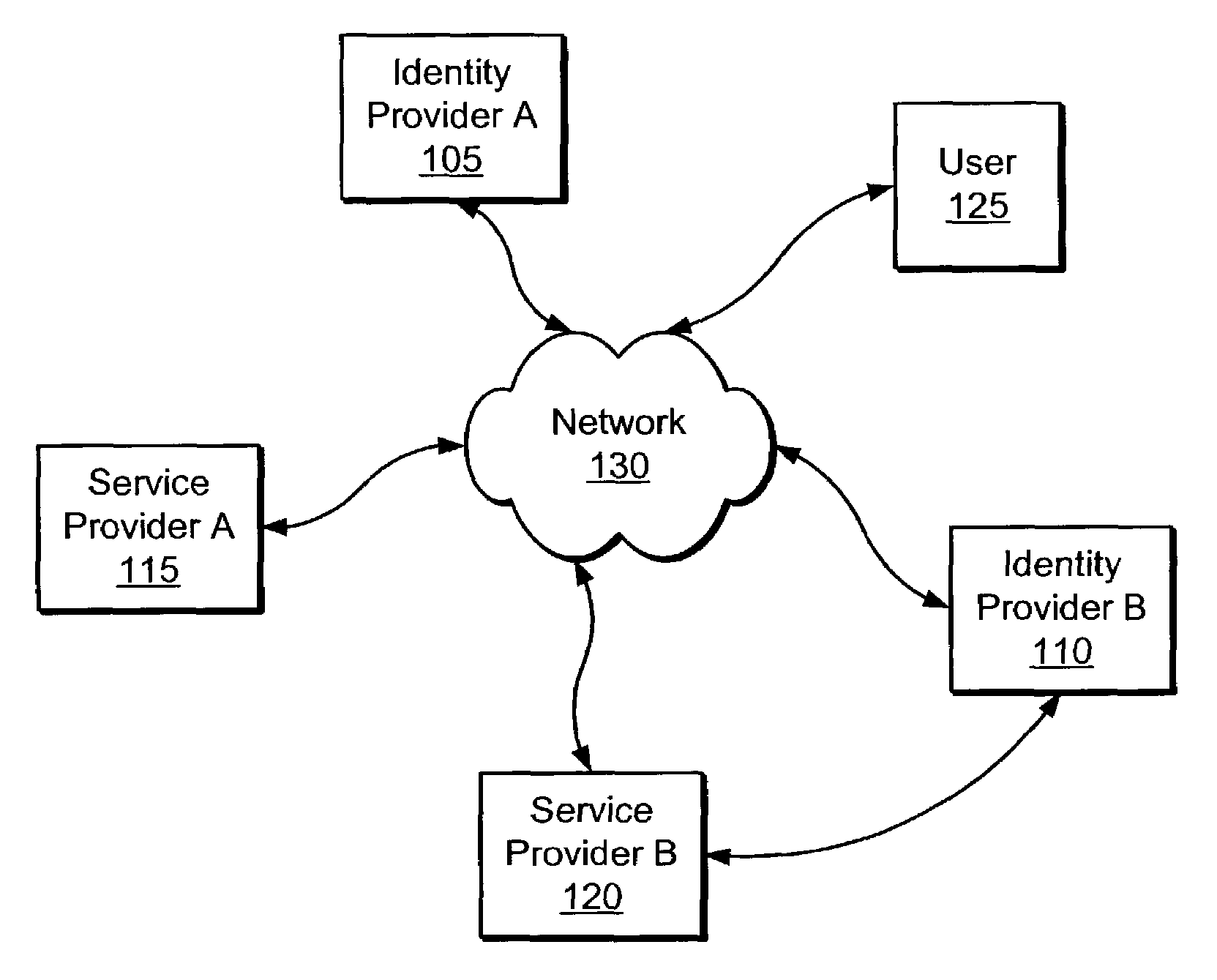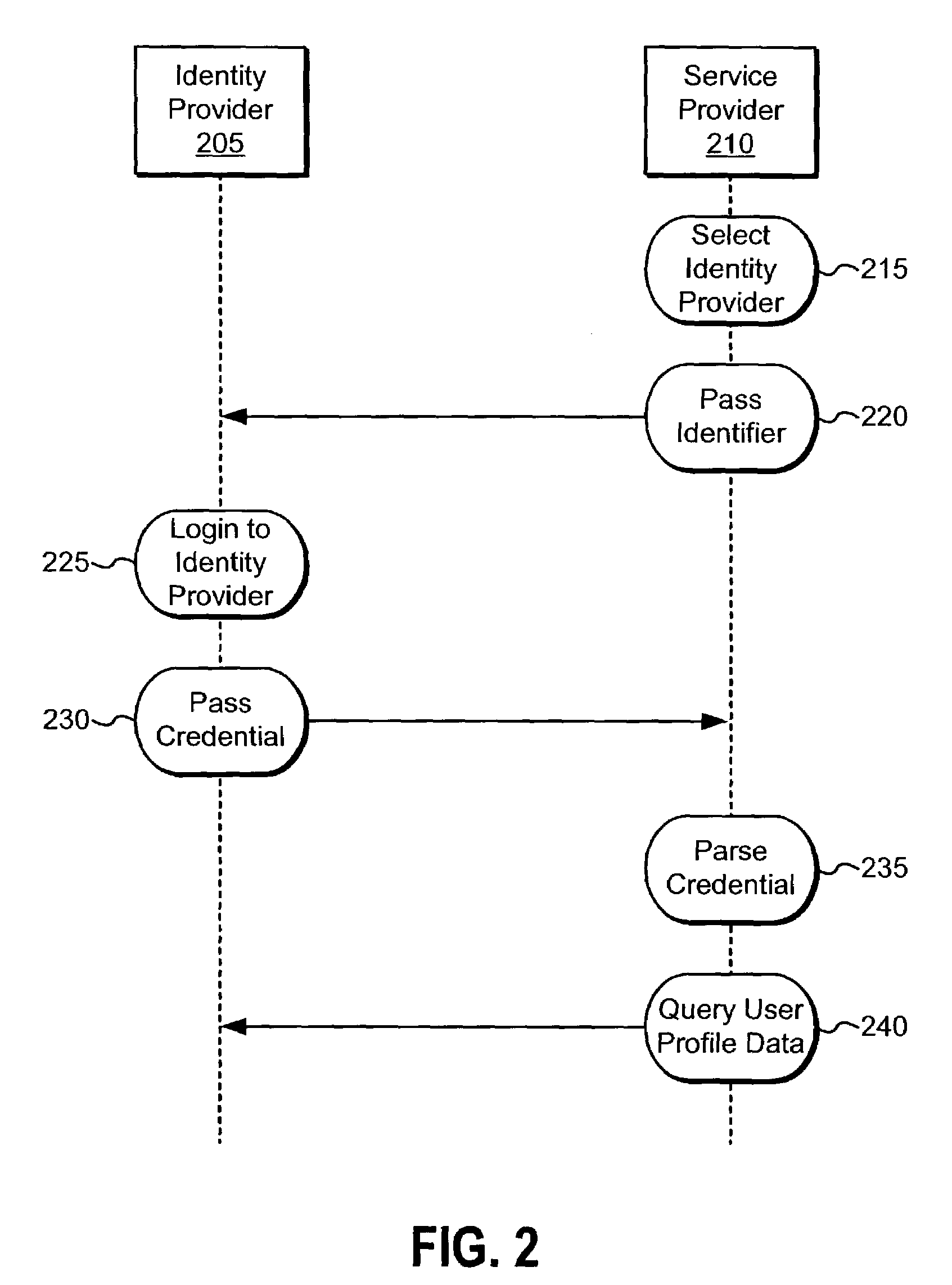Distributed network identity
a distributed network and identity technology, applied in the field of network computing, can solve the problems of affecting the usability of service providers, affecting the integrity of transactions, and affecting the user's privacy, so as to facilitate user interactions with service providers and ensure the integrity of transactions
- Summary
- Abstract
- Description
- Claims
- Application Information
AI Technical Summary
Benefits of technology
Problems solved by technology
Method used
Image
Examples
example 1
[0201]An insurance company called Insursave offers their customer 7 different service offerings on the Internet. Each of the programs is run by different groups and users have to create an account on each of the systems. They want to offer consumers the convenience of offering their customers bundled pricing and services. To do this, they need to tie together the distinct systems to a single, distributed, cross-domain single sign-on solution that keeps the customer data secure. Once logged into Insursave, they want customers to have the ability to easily move from service to service.
example 2
[0202]Company A would like to create a joint customer relationship management (CRM) application with Company B. The CRM application requires a customer to have an authenticated identity with both companies. They want to create a simpler model for their joint customers by offering cross-domain single sign-on to either site.
example 3
[0203]Company A would like to simplify employee access to over 12 different internal services. These include expense reporting, travel requests, editing / changing of benefits, access to employee discount services, etc. These systems are run by different web groups, so they would rather use a distributed system to link their different data sources together with single sign-on.
PUM
 Login to View More
Login to View More Abstract
Description
Claims
Application Information
 Login to View More
Login to View More - R&D
- Intellectual Property
- Life Sciences
- Materials
- Tech Scout
- Unparalleled Data Quality
- Higher Quality Content
- 60% Fewer Hallucinations
Browse by: Latest US Patents, China's latest patents, Technical Efficacy Thesaurus, Application Domain, Technology Topic, Popular Technical Reports.
© 2025 PatSnap. All rights reserved.Legal|Privacy policy|Modern Slavery Act Transparency Statement|Sitemap|About US| Contact US: help@patsnap.com



